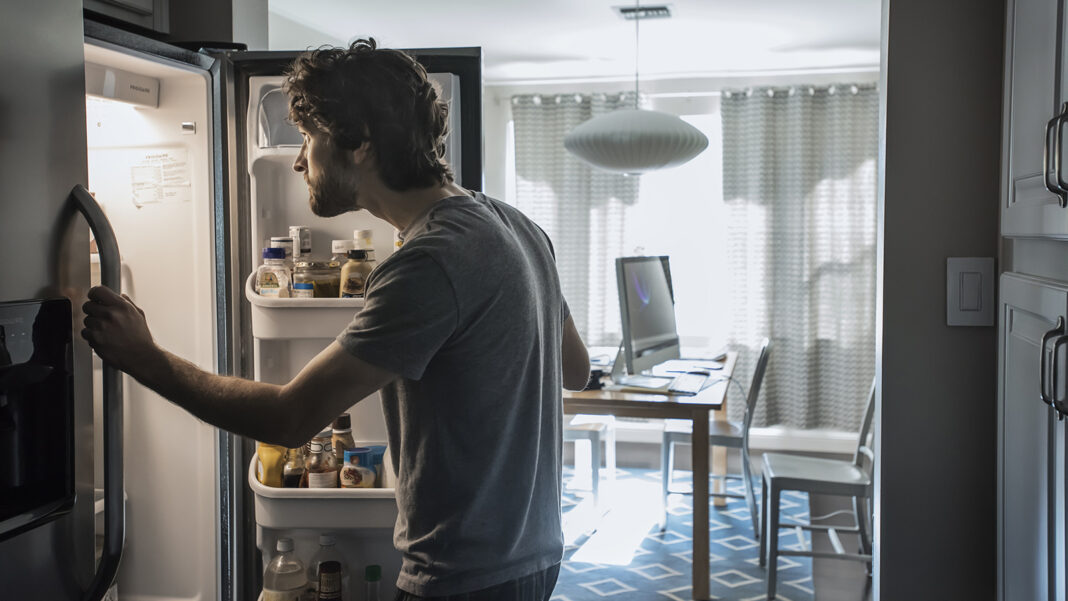You might hate dragging your groceries home and loading them in the fridge, but you can take solace in the fact that you are lucky enough to be living in an era of modern refrigeration. A couple of centuries ago, keeping cold was a much more complicated ordeal. Our ancestors grappled with the constant threat of food spoilage and the accompanying risks of foodborne illnesses.
The absence of refrigeration meant resourcefulness was essential, and seasonal constraints further compounded the issue. Advertisement Then, in the 19th century, basic refrigeration technology emerged and completely changed the world. But and how has it evolved? Benjamin Franklin’s pioneering experiments with Dr.
John Hadley in the mid-18th century laid the groundwork for advancements in refrigeration technology. to John Lining dated June 17, 1758, Franklin described their collaboration. Over at Cambridge University in England, the duo began conducting pioneering experiments exploring the cooling effects of evaporation, using as their experimental medium.
Advertisement They observed that when a thermometer’s ball was dipped into ether, initially, there was no change in temperature, as the ether and thermometer were at the same temperature: approximately 65 degrees Celsius (149 degrees Fahrenheit). However, upon removing the thermometer from the ether and allowing the wetted ether to evaporate, the mercury’s temperature dropped significantly. They continued the experiment by wetting the ball with ether, ultimately lowering the mercury to 7 degrees Celsius (45 degrees Fahrenheit), which was 25 degrees below the freezing point.
These experiments deepened our understanding of principles, which would later underpin advancements in refrigeration and air-conditioning technologies. Advertisement Another prolific American inventor, Oliver Evans, would take the principles developed by Franklin and Hadley and draw up a design for a vapor-compression cycle, or early refrigerator, in 1805. Evans’ first love, however, was the , so he set his plans on ice while he spent his energy developing things like a steam-powered river dredger.
Thankfully, however, Evans’ design didn’t go to waste. Advertisement While in Philadelphia, Evans became friends with a young inventor called . Even as a teenager, Perkins displayed remarkable ingenuity, inventing a way to plate shoe buckles at the age of 15.
The precocious inventor saw the promise in Evans’ work on refrigeration, and he took Evans’ design and began modifying it, receiving a patent on his own design — called a compression refrigeration cycle — in 1834 [source: ]. This cycle formed the basis for modern refrigeration systems and air conditioning. Perkins then persuaded a man named John Hague to construct the first practical refrigeration machine, which utilized a closed-cycle system that involved the compression and expansion of a volatile fluid (often ether or other gases) to create cooling effects.
Let There Be Ice Created more as an experiment than something fit for commercialization, Perkins’ product certainly had room for improvement. For instance, since Freon wouldn’t be invented for another century or so, early refrigerators like Perkins’ used potentially dangerous substances such as ether and ammonia to function. Still, his device did manage to produce a small quantity of ice by drawing on the same fundamental principles used in the modern refrigerator.
Following the young inventor’s success in creating a functioning fridge, other inventors moved the device rapidly toward commercialization. As for Perkins, he retired soon after inventing the refrigerator and died in 1849, never witnessing the tremendous impact his invention had on modern life and mechanical refrigeration systems [source: ]. Advertisement The first practical refrigerating machine may have emerged in the 1800s, but the spans centuries and involves numerous inventors and innovations.
Advertisement Early refrigerators, dating back to the late 19th and early 20th centuries, were vastly different from their modern counterparts. These early refrigeration systems primarily relied on mechanical and chemical processes, using toxic gases like ammonia or sulfur dioxide for cooling. They were often bulky, large, and required a fair amount of maintenance.
One significant difference was the lack of automation. Early refrigerators needed regular attention, including manually adding refrigerants, defrosting ice buildup and adjusting temperature settings. Additionally, these refrigerators were less energy-efficient, contributing to higher utility bills.
Advertisement In contrast, modern refrigerators have undergone significant advancements. They are sleeker, more compact and come in various styles to fit kitchen aesthetics. Automation and digital controls have made temperature regulation precise and hassle-free.
Frost-free technology eliminates the need for . One essential improvement is their reduced impact on the environment. Early refrigerants, such as (CFCs), had harmful effects on the ozone layer.
Modern refrigerators — equipped with more ozone-friendly — have played a role in mitigating ozone depletion while also being energy-efficient and convenient for consumers. Advertisement.
From: howstuffworks
URL: https://science.howstuffworks.com/innovation/inventions/who-invented-the-refrigerator.htm



